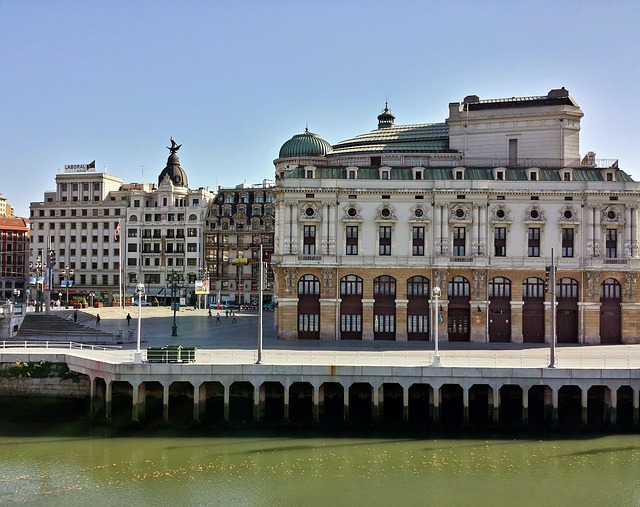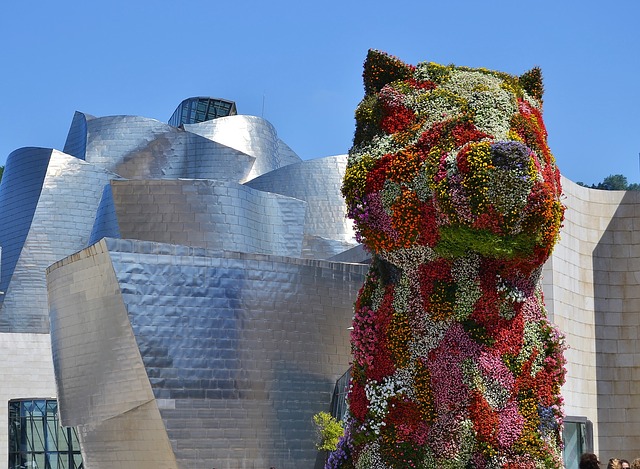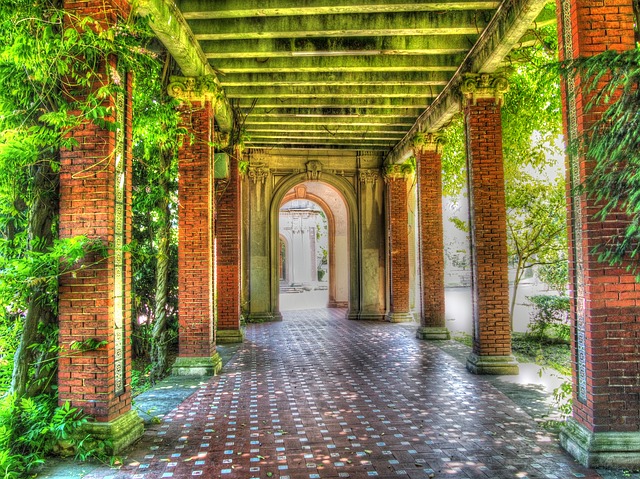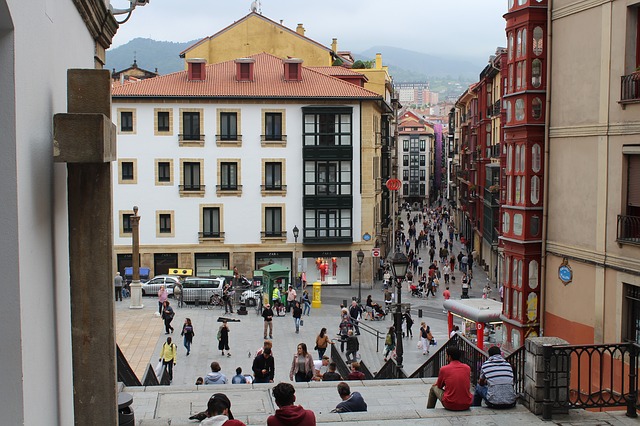What to see in Bilbao, tourist places not to be missed in it
Indice
Located on the northern coast of Spain and offering a dynamic and authentic experience, no trip to Spain is complete without a visit to Bilbao and the Basque Country. Best known for Frank Gehry’s 1997 Guggenheim Museum Bilbao, the city’s industrial past exists within a modern urban renewal highly acclaimed as a hotspot for art and architecture.
Spain’s tenth largest city offers a temperate climate and nearby, easily accessible beaches and many tourist attractions. The economic and cultural centre of northern Spain, Bilbao, is home to world-class museums, charming neighbourhoods and renowned Basque cuisine, including ubiquitous and tasty pintxos.
There are so many things to do in Bilbao that it can be difficult to choose. With this Bilbao travel article we hope you’ll make it a little easier but it’s complicated as it offers much more than just the essentials to enhance the Bilbao visitor experience. In addition to learning what to do in Bilbao, we will give you valuable recommendations for hotels and tours and general information such as Where is Bilbao? And how do I get to Bilbao?
Things to do in Bilbao
Old Town, Casco Viejo
Start your walk through the city, visit the Old Town and enjoy a traditional three-course lunch in one of Bilbao’s many restaurants located in the district. Also known as the Old Town or the Seven Streets, the Old Town is the medieval quarter of Bilbao and consists of seven streets, the citizen and visitor have an abundance of shops and restaurants to choose from to enjoy a pleasant culinary experience. What better for a traveller in Bilbao than a typical Bilbao lunch that takes place early in the afternoon and consists of three dishes: a main course, a main course, followed by a dessert. After lunch, stroll around the area and visit nearby shops and buildings.
How to get to Casco Viejo
Seven Streets can be reached by metro, tram or bus from various parts of the city.
Plaza Nueva
Built in 1821, the Plaza Nueva is one of Bilbao’s emblematic squares and has a monumental neoclassical design. It is surrounded by buildings, but can be accessed through arches, which also house many historic restaurants and shops. Formerly there was the government of Bizkaia, the Plaza Nueva is now home to the Royal Academy of Basque Language or Euskaltzaindia.
The Plaza Nueva is the place where many bilbainos like to gather for a beer with pintxos. The pintxos are small pieces of bread covered with all sorts of wonderful things. Take a trip to this square on Sundays, when there is a traditional market full of antiques, flowers, animals and much more.
How to get there
All you have to do is take the metro and get off at the Bilbao del Casco Viejo metro station, exit at either of its two exits and you will have the square just a few metres away.
Arriaga Theatre

Inspired by the famous Paris Opera and built in neo-baroque style, Bilbao’s Arriaga Theatre houses year-round entertainment, including opera, ballet, concerts and plays. The Arriaga Theatre was inaugurated in 1890, then remodelled first in 1919 due to a fire and again in 1985 after flood damage. Located in Casco Viejo, the Arriaga Theatre bears the name of Juan Crisóstomo de Arriaga who composed his first opera at the age of 13 and became known as «Spanish Mozart» after his death at the age of 20.
How to get to
Located in Arriaga Plaza, the Arriaga Theatre can be accessed by the Casco Viejo metro station, by bus or by the Arriaga tram station.
La Ribera Market
Enjoy a traditional shopping experience in Europe in La Ribera, an internal market. For a true sense of the Bilbao community, stroll through the market and chat with local buyers and sellers. In addition to being a suitable place to buy fresh fish, you can also find other products such as souvenirs of Bilbao, etcetera. The building inside the market has an art-deco design, with large windows and natural lighting, as well as bars and restaurants.
How to get there
The market is located next to the estuary of the river in Bilbao, and can be accessed from the tram or walking from the station of the Old Town of Metro Bilbao.
Santiago Cathedral
How to get there
Although the official date of construction is credited in the 14th-15th centuries, it is believed that this Gothic-Neo-Gothic cathedral existed in some form since 1300 and may be the oldest building in Bilbao. Originally the main parish church of the city, it was not titled as a cathedral until the Catholic diocese of Bilbao was formed in 1950. Named after the city’s patron saint, Apostle James the Great, the Cathedral is a stop along the route of the Camino de Santiago.
The Cathedral of Santiago is located inside the Casco Viejo and can be reached by subway or tram.
Basque Museum of Bilbao (Euskal Museoa Bilbao)
Located in a 17th century Baroque building that once served as a convent and Jesuit school, the Basque Museum of Bilbao focuses exclusively on the rich history and tradition of the Basque people. Inaugurated in 1921, the museum contains more than 20,000 objects dating from prehistoric times. The museum’s exhibits include a large-scale model of Vizcaya and extensive information on the region’s traditional industries, sheep grazing, fishing and agriculture.
How to get there
The Basque Museum is located inside the Casco Viejo, just a few metres from the Unamuno exit from the Casco Viejo station of the Bilbao Metro.
Church of San Nicolás de Bari
Just in front of the Arriaga Theatre, in the old town, is one of the most photographed churches in Bilbao, San Nicolás de Bari. Built between 1743-1756, the distinctive Baroque façade and twin towers make this church a local monument loved by the locals. Adjacent to a pleasant park next to the river, the Arenal, San Nicolás is the name of the patron saint of sailors and the church was a meeting point for those who headed for the sea. The design of the building is unique for being an octagon within a square and is said to take the form of a Greek cross.
How to get there
Located in the Old Town, San Nicolás is accessible by metro, tram to Arriaga, and bus.
Ensanche Bilbao
Leave the Old Town behind and cross the river to go to the neighbourhoods of Indautxu, Abando, the Guggenheim Museum, etc.
Guggenheim Museum in Bilbao

Designed by architect Frank Gehry, this museum features an impressive chrome and metal construction. Not only is it a monumental site to see for its architectural beauty, but Bilbao’s Guggenheim Museum also has a large collection of modern and contemporary art. Explore this must-see during your trip to Bilbao and you’ll be inspired by the many exhibitions by Spanish and international artists.
Any visitor will be impressed by the museum’s external and internal architecture and by a temporary video installation, and by any of the temporary and fixed exhibitions on display at the museum.
How to get to
The Guggenheim Museum is located in the city centre and can be reached by metro, taxi or bus. Link to their website.
La Salve Bridge
Although its popular name is Puente La Salve, the official name of this hanging bridge from 1970 is the bridge «Príncipe y Princesa de España» (Prince and Princess of Spain). Built to provide access to the north of the city, the bridge became widely known when the Guggenheim Museum was built directly below. The first bridge in Spain to use a cable-stayed system, Puente La Salve is composed of green concrete. In 2007, on the tenth anniversary of the Guggenheim, the bridge received a remodelling in the form of a red arched door and the bridge is now artistically illuminated at night with static and moving lights.
How to find us
The La Salve Bridge is connected to the Guggenheim Museum, so it is easily reached by tram. And Moyua station is the nearest metro station.
Dona Casilda Park

For more than a hundred years, Doña Casilda Park has functioned as the main open-air green space in Bilbao and is widely used by its citizens. Located in the Indautxu neighbourhood, Dona Casilda was designed as an English Garden and contains an excellent collection of hundred-year-old trees. The locals call it Parque de los Patos and in fact there is a very nice pond of ducks and other birds, as well as other features such as a cybernetic fountain, and several sculptures. It is the ideal place for a quiet stroll, as well as home to frequent public performances, Dona Casilda also contains the Bilbao Museum of Fine Arts.
How to get there
Doña Casilda Park is less than five minutes from the Guggenheim Museum and can be reached on foot from most areas within the city centre.
Bilbao Fine Arts Museum
Located in the Dona Casilda Park, the Bilbao Fine Arts Museum is the second most visited museum in Bilbao (after the Guggenheim) and contains an extensive collection of Basque, Spanish and European works dating from the 12th century to the present day. The origins of the museum are the Museum of Fine Arts which was inaugurated in 1914, as well as the Museum of Modern Art established in 1924. Founded in 1945, today’s museum occupies a 1970 Modernist building that received a major renovation in 2001. Considered one of the best Spanish museums outside of Madrid, the Museo de Bellas Artes de Bilbao contains more than 10,000 works in chronological order.
How to get there
The Bilbao Fine Arts Museum is located within the Dona Casilda Park, a few minutes’ walk from the Guggenheim Museum and is easily accessible on foot from the central areas of the city. Link to their website.
The Eixample, El Ensanche
The name El Ensanche means ‘expansion’ and this is the annexed area built next to the original city in 1870. Built and built in the independent municipality of Abando, today it is the financial and commercial centre of Bilbao and is the site of several popular tourist attractions. Realized in comparison of those of Paris and London, the sum to Bilbao of the Eixample allowed the creation of a new and great strip of the city for commercial and residential uses. Divided by the Gran Vía, the Ensanche contains many significant 20th century buildings including the forty-storey Iberdrola tower and the neighbourhood is easily travelled on foot. Inside the Plaza de España or circular there is a statue of Don Diego López de Haro, the Lord of Bizkaia who founded Bilbao in 1300.
How to get there
The Ensanche is crossed by the subway and the stations that pass through it are Abando, Moyua, and San Mames.
Federico Moyua Square (Elliptical Square)
Originally conceived as a center as early as 1876, eight streets radiate outward from Plaza Moyua in such a way that it functions as a popular urban oasis as well as a meeting place for locals. Located in the Ensanche de Abando neighborhood, today’s plaza dates back to the 1940s and is decorated with English and French flower gardens arranged around a central fountain while the plaza’s name honors a former mayor of the city. Nearby the visitor will find the Palaccio de Chevarri, as well as some old mansions of Bilbao. The Hotel Carlton, one of the emblems of the city, was the seat of the Basque Government during the Spanish Civil War.
How to get there
Plaza Moyua has its own metro stop (Moyua) and is also crossed by several bus lines.
Palace of Chavarri
One of the most emblematic buildings in Bilbao, the Palacio de Chavarri has as its current function the offices of the Spanish government in Vizcaya. The Chavarri Palace resembles the Renaissance palaces in Antwerp and Bruges. It is the creation of the Belgian architect Paul Hankar in 1889. It was designed to be the home of the businessman Victor Chavarri who had studied in Liege and asked to be built in a Flemish Renaissance style. The facade and ceiling are impressive in themselves and a peculiar detail of the building is that there are no two windows of the same size.
How to get there
Chavarri Palace faces Plaza Moyua and is easily accessible by subway from Moyua.
Zubizuri «Puente Blanco» (White Bridge)
Connecting the river bank between Campo Volatin and Uribitarte, Santiago Calatrava’s 1997 Zubizuri White Bridge is an arched footbridge tied in which a curved footbridge is supported from the top arch by steel suspension cables. 75 meters long, the bridge structure is in fact white and the roof is constructed solely of translucent glass bricks. Open the same year as the Guggenheim, the bridge offers excellent access to that museum. It resembles a sailboat, the Zubizuri lights up elegantly at night and while a newer attraction has become one of the essential things to do in Bilbao. However, if it rains, we recommend that you do not cross it because it may slip due to the fact that the ground becomes a dangerous ice rink.
How to get there
The Zubizuri is easily accessible from the Guggenheim, also by tram. The nearest metro station is Moyua.
Ria de Bilbao Maritime Museum
Inaugurated in 2003, the Ria de Bilbao Maritime Museum contains both indoor and outdoor exhibitions in the site of the former Euskalduna shipyard, located on the left bank of the Bilbao estuary. The museum shows the extensive shipping history of Bilbao as a port, but also shows us a new role that is developing the city moves to part of its industrial past. The Euskalduna shipyard was established in 1900 and until 1984 played a key role in the modern naval industry of the Basque Country. The materials used in the museum are stone, steel, wood and are the same as those used in shipbuilding.
How to get there
The Ria de Bilbao Maritime Museum is located under the Euskalduna bridge. The nearest metro stop is San Mames and there is also a tram stop nearby. Link to the museum.
Palace of the Provincial Council of Bizkaia, Diputación Foral de Bizkaia
One of the most modern iconic public buildings in Bilbao, the Palacio de la Diputación, is the seat of the executive government of Vizcaya. Built between 1890 and 1900, the Palace is an eclectic mansion, with spectacular windows and an imposing balcony. Described as compact and elegant, the interior is richly decorated with various works by artists from the late nineteenth century. At the back of the Palace is the Biscay Library.
How to get there
The Palacio de la Diputación is located in the neighborhood of El Ensanche and has a metro stop right next to the building, that of Moyua.
Alhóndiga (Azkuna Zentroa)
The Alhóndiga began its existence in 1909 as a wine store, but in 1970 a newer facility was planned and the Alhóndiga was abandoned. The city of Bilbao bought the property in 1994 to be reused as a public space and the Alhóndiga that opened in 2010 has become a favorite destination for citizens. Today’s renowned cultural and leisure centre was remodelled by French designer Philippe Starck and in 2015 was renamed to honour former Mayor Inaki Azkuna. The former Azkuna Zentroa warehouse consists of exhibition spaces, auditoriums, multimedia centre, libraries, a multiplex cinema, a glass-bottomed swimming pool, a gymnasium, a selection of popular shops and restaurants and a rooftop terrace.
How to get to
The Alhóndiga is located inside the Plaza Arriquibar. The nearest metro stops are Moyua and Indautxu.
Campos Eliseos Theater
The Campos Eliseos Theatre, influenced by modernism and Italian influence, is one of the largest theatres in Bilbao, with a capacity for 800 people and the most advanced technology in Spain. Built in 1902, the Teatro is Vizcaya’s best example of an Art Nouveau façade and is known locally as the chocolate box for its fantastic appearance. Evoking a Moorish style more associated with southern Spain or the Middle East, the Champs Elysées remained inactive for 20 years until it underwent a major overhaul to reopen in its current form in 2010.
Façade of the Campos Eliseos Theatre
How to get to
Campos Eliseous Theatre is easily accessible by metro from Abando.
University of Deusto
The oldest private university in Spain, the University of Deusto was founded by the Jesuits in 1886, when it was the largest building in Bilbao. Today, the classic main style building of the University is distinguished on the banks of the river near the Guggenheim Museum in the Abandoibarra district. In 1916 a business training programme was incorporated, the first and only programme in Spain for 50 years. Inside the original University building there are two cloisters, a large central staircase, a Gothic chapel, the Paraninfo Hall and a library.
How to get to
The University of Deusto is easily accessible on foot via the Padre Arrupe footbridge or the Deusto bridge. The Deusto metro station is also close to this area.
Albia Gardens
Located in the Ensanche, these were the first gardens planted in the expansion zone of the city. Albia gardens are popular today for walking, relaxing, and meeting friends. Next to the gardens is the Church of San Vicente Martir and across the street is the well-known Café Iruña. There is a fountain in the centre of the garden which is surrounded by a collection of sculptures. Close to Circular Plaza, this cozy urban garden is within walking distance of several popular cafes and bars.
How to get there
The Albia Gardens are inside El Ensanche near the Circular Plaza and are accessible by metro and tram to Abando.
Mount Artxanda
The best view over Bilbao is at the top of Mount Artxanda. Part of one of the two mountain ranges that surround the city, Mount Artxanda is close to the city centre thanks to a 100-year-old funicular railway that departs from the Arangoiti neighbourhood. The trip takes only three minutes, and the funicular runs every 15 minutes. In the upper part, you can enjoy the best views of Bilbao, with buildings such as the Iberdrola Tower and the Guggenheim Museum, as well as the Ria Nervión and its bridges, including the Portugalete Suspension Bridge. The summit also includes gardens, a sports complex, a hotel and several restaurants.
How to get there
Take the Bizkaibus bus number 3216 and get off at the Berriz stop. Then walk the short distance to Deusto where you can walk uphill to the top or ride the funicular.
Basilica of Begoña
Situated on top of a hill overlooking the Old Town, the construction of the Basilica of Begoña began in the late sixteenth century on the site where the Virgin Mary «appeared» in a vision and the Basilica is dedicated to the Virgin of Begoña, patron saint of Bizkaia. Initiated in Gothic style, the Basilica also incorporates Renaissance components in a fashion that is called «transition». Located in the district of La Salve. Name due to the fact that the sailors came back from the Nervión when they saw the bell tower and gave thanks to the Virgin of Begoña.
How to get there
The Basilica can be reached by elevator from the Old Town or by going up the stairs from the Plaza Unamuno.
Roads of Mallona

Connecting the Old Town of Bilbao to the Etxebarria Park and the Begoña District, the Mallona Roads are used daily to offer panoramic views over the city of Bilbao and the Nervión River. Ascending from the Plaza Unamuno in the Old Town, these 300 staircases are an attraction in themselves, as well as a way to reach the Etxebarri Park and the Basilica.
How to get to
The Mallona stairs are to the right of the Casco Viejo metro exit at the Unamuno square exit.
And this is just a summary of everything you can see in the Villa de Bilbao. There are still places like the new San Mames football stadium, the Gran Vía of Don Diego López de Haro, the church of San Anton and many other typical places of Bilbao.
